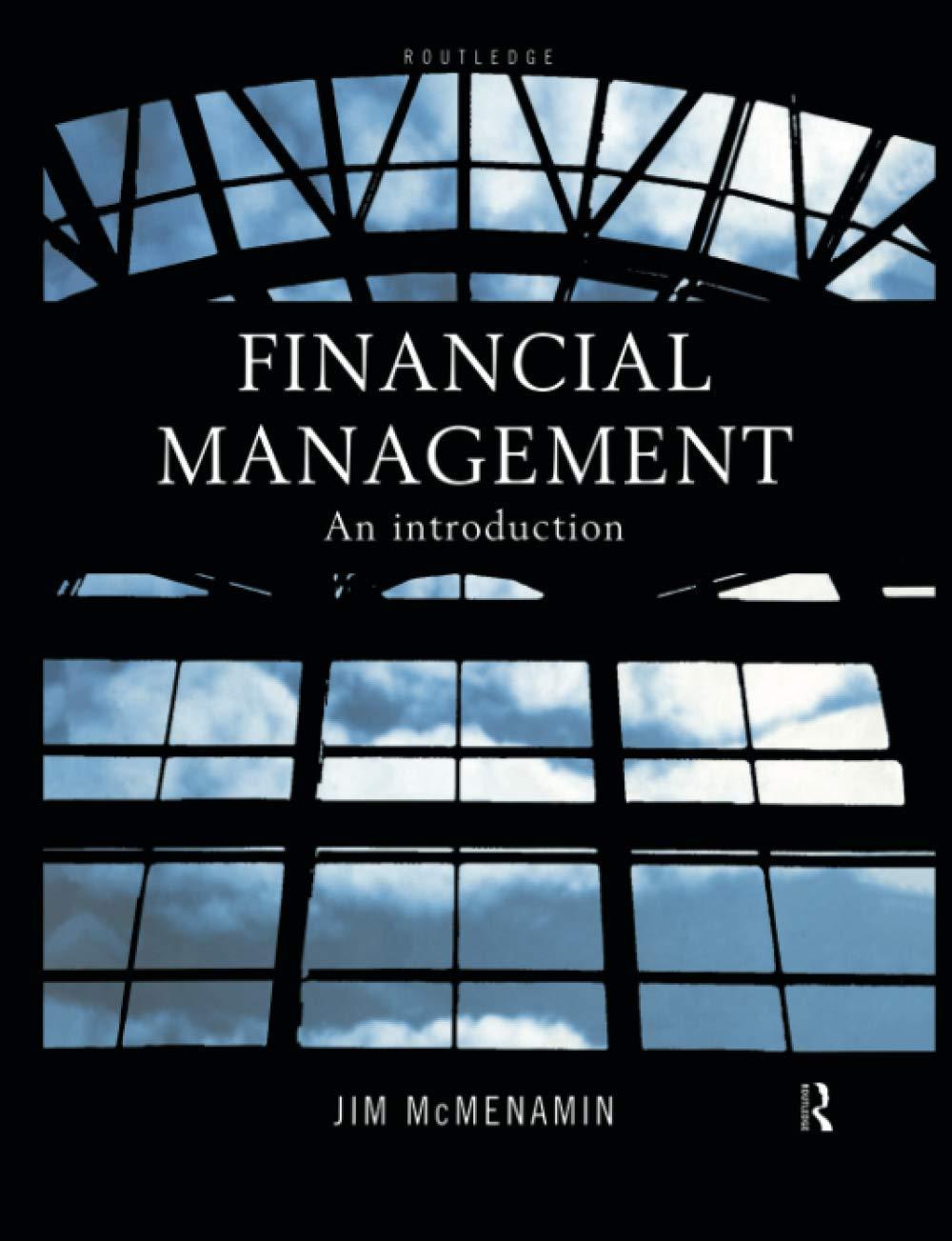14 Working capitalvarious. Bardsey plc operates a chain of city centre furniture stores, specialising in high quality
Question:
14 Working capital—various. Bardsey plc operates a chain of city centre furniture stores, specialising in high quality items. It is 60 per cent owned by the original family founders. Its sales over the past decade have never grown faster than 5 per cent in any one year, even falling during a recent recession. No growth is expected from existing operations in the next few years despite continuing to offer generous credit to customers.
In order to achieve faster growth, it is considering the development of a number of ‘out of town’ sites, adjacent to giant supermarkets and DIY stores. During 1997, this would involve a capital outlay of £50m plus additional working capital requirements of £20m in order to finance stock-building. In recent years, Bardsey’s capital expenditure, mainly store refurbishments and vehicle replacements, and averaging around £10m per annum, has been financed entirely from cash flow. This category of investment will continue at about the same level next year. Bardsey’s fixed assets were revalued two years ago.
Bardsey’s accounting statements for the last financial year are summarised in Exhibit A, and Exhibit B gives information on key financial indicators for the stores sector as a whole (listed companies only).
Bardsey’s debentures currently sell on the stock market at £130 per £100 nominal.
The current bank base rate is 8 per cent, and economists expect interest rates in general to fall over the next few years. The stock market currently applies a price earnings ratio of 11:1 to Bardsey’s shares.
Required:
As Bardsey’s chief accountant, you are instructed to:
(a) Calculate Bardsey’s expected net cash flow in 1997 without the investment, assuming no changes in the level of net working capital.
(Note: A statement in FRS1 format is not required.)
(b) Prepare a report, containing suitable reservations about the use of ratio analysis, which compares Bardsey’s financial performance and health with the stores sector as a whole.
(c) Advise the board of Bardsey as to how the proposed investment programme might be financed. You should refer to possible economic reasons why interest rates may fall, and to the possible implications for Bardsey’s financing decision.
(d) Suggest other possible uses of the increasing cash balances if Bardsey rejects the proposed investment.
Exhibit A: Bardsey’s financial statements Profit and loss account for the year ended 31 December 1996 £m Turnover 150.0 Cost of sales* (90.0)
Operating profit 60.0 Interest charges (15.0)
Pre-tax profit 45.0 Corporation tax (12.0)
Profits after tax 33.0 Dividends proposed (20.0)
Retained earnings 13.0 Balance sheet as at 31 December 1996 Assets employed £m £m £m Fixed (net):
Land and premises 200 Fixtures and fittings 50 Vehicles 50 300 Current:
Stocks 60 Debtors 100 Cash 40 200 Current liabilities:
Trade creditors (85)
Dividends payable (20)
Tax payable (12) (117)
Net current assets 83 Total assets less current liabilities 383 15% Debentures 2010–12 (100)
Net assets 283 Financed by:
Issued share capital (par value 25p): 100 Revaluation reserve 60 Profit and loss account 123 Shareholders’ funds 283 * This includes depreciation of £8m.
Exhibit B: Selected ratios for the stores sector Return on (long-term) capital employed 14.3% (pre-tax)
Return on equity 15.3% (post-tax)
Operating profit margin 26.2%
Fixed asset turnover (sales/fixed assets) 1.2 times Stock period 180 days Debtor days 132 days Gearing (total debt/equity) 42%
Interest cover 3.2 times Dividend cover 2.1 times P/E ratio 15:1
Step by Step Answer:






